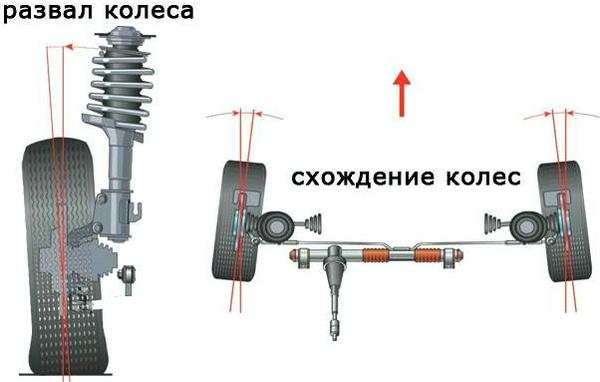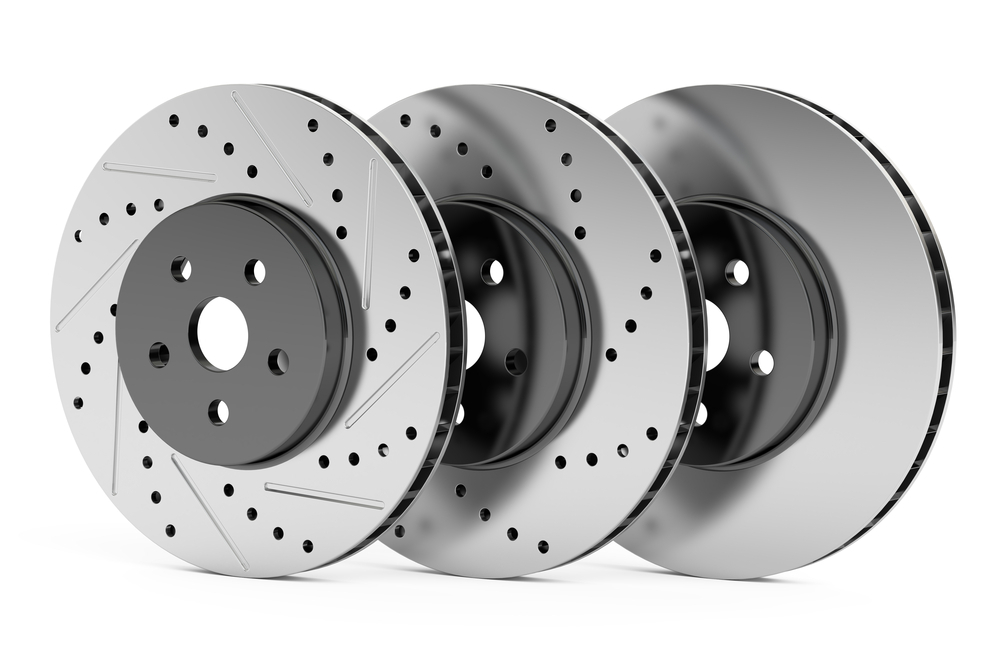
Camber adjustment. Do-it-yourself collapse
Content
It will not be news to anyone that an incorrectly adjusted camber can lead not only to a deterioration in tire quality, but also to high fuel consumption. That is why, it is worth approaching responsibly to exhibiting a collapse.
With my own strength adjust the descent camber not at all difficult, as it may seem at first. We will try to consider this issue in detail and give the best advice to new mechanics. Stabilization of a pair of steering wheels is the most important aspect that affects the stability of the car on the road. What does it mean? The wheels should move in a straight line, and bypassing the turn, return to their original position.
Following from this, the urgent need for a wheel stabilization procedure is explained very simply. When the car is moving, wheels that are not stabilized move to the side as a result of jolts from the road. Then the driver must return the wheels to the desired (rectilinear) position. Given that this happens all the time, the person behind the wheel gets more tired. In addition, the steering gear contacts wear out faster. And with increasing speed, the growing instability becomes unsafe.
What determines the stabilization of the steered wheels? The answer is simple: from their convergence or collapse. Camber adjustment wheels can be produced in auto repair shops, but it is quite possible to solve this problem and their own hands.
Signs that wheel alignment needs to be adjusted
The first thing to do is determine if the camber adjustment is needed.
Let's consider this point by point:
- Continuous departure of the car from the given course of straight-line movement in one direction or another.
- Uneven tire wear.
- When examining the groove of the front wheel tread along the axis of rotation, you need to examine the edges of this groove. The edges are the same - this means that there is no reason to worry, if one of them has some sharpness, and the other does not, then you have a problem. But you should pay attention to this only when driving calmly. If you are a fan of fast speed, then this condition can be misleading.
- Difficulty in manoeuvring.
The presence of at least one of these symptoms says that you need to install the collapse of the convergence. drivers with some experience in do-it-yourself auto repair, with a strong desire, can perform the collapse on their own.
How the camber is regulated?
For repairs you will need:
- ruler;
- a piece of chalk;
- standard set of tools;
- plumb line;
- flat area with a pit or lift.
First you need to find out: how accurately the convergence was made before. Those. “Zero” position at the steering rack during rectilinear movement. How to reproduce it? We follow further instructions:
- Park the machine on a level surface.
- Then turn the steering wheel as much as possible in one direction, making a mark on the top of the steering wheel (in the middle of the circle) turn the steering wheel all the way to the other side. In this case, you need to count the number of whole revolutions and parts of a whole circle (shares).
- When calculated, divide the amount received by 2 and turn the steering wheel to this position.
If this result coincides with the usual position of the steering wheel, then the “zero” position of the rack is set. If not, you will have to make it yourself.
How to set the "zero" position?
you need to remove the steering wheel, to do this, unscrew the nut. After fixing it in the “zero” position calculated by us (the spokes of the steering wheel should be located symmetrically). Now we will focus on this position. In order to check yourself, you need to turn the steering wheel left / right alternately - in both directions it must turn the same number of revolutions, so turning the wheel to the side to the limit, count them.
Next, you need to loosen the lock nuts of the tie rod ends. One rod should be unscrewed a little, and the second one should be twisted by the same number of revolutions (this is very important!). This procedure can be performed once and no longer change the position of the steering wheel. And in the future - only to regulate the convergence.
How to adjust wheel alignment?
After checking the straightness, you need to check the degree of congestion of the transport, the pressure in the tires, whether the suspension and steering mechanism are securely fastened for a knock when the steering wheel is turned. After that, you can already begin to check and adjust the convergence.
To determine the wheel alignment, calculate the difference between the points on the rim in front and behind its geometry axis. To do this, you need to use a special chain with a ruler or a tensioner.
To measure the toe, the ruler is installed between the wheels, so that the tips of the pipes rest against the side of the tires, and the chains touch the ground. When you set the arrow to the zero position, the car should be rolled forward a little so that the ruler ends up behind the wheel axle. In this case, the arrow should show the level of convergence. In case of non-compliance with the norm, it must be corrected.
In order to adjust the wheel alignment, you need to rotate the couplings of the side steering rods. When this operation is carried out, the control nuts must be securely tightened.
Camber adjustment
The most difficult process is checking and adjusting the camber, but it can also be done on your own. To do this, the car rises so that the wheels do not touch the ground. After that, you need to calculate the places of the same runout on the side of the tires. With the wheels in the straight ahead position, hang a load next to the wheel. Chalk marks are made around the circumference of the wheel at the top and bottom. Using a plumb line, calculate the distance from the rim to the line.
The difference in the distance between the weight thread and the upper part of the rim is the level of camber. For accuracy of the procedure, roll the car so that the wheel rotates 90? .. Repeat several times and record the results.
then remove the wheel of the car and release the 2 bolts securing the shock absorber strut bracket to the steering knuckle. Then we shift the steering knuckle in or out, in which direction, and at what distance, depends on the results of your measurements. This is how you can set the desired camber angle. After the procedure, you need to tighten the bolts, put the wheel on and take measurements again.
When doing the wheel alignment with your own hands, remember that you need to take measurements several times (at least three), and then take the arithmetic mean. If the wheel alignment is adjusted correctly, the vehicle will not move to the side when driving, and tire tread wear will be uniform.
The entire adjustment procedure is carried out again if, after the work carried out, the machine still “leaves” the trajectory of rectilinear motion. Incorrect camber or convergence will also be indicated by uneven tire wear, so tire diagnostics will also not be superfluous.
Self-performing such a difficult procedure will save a decent amount of money, but remember that for most modern cars, it is recommended to carry out a wheel alignment / collapse in car services. Additionally, you can watch a tutorial video on how to make your own wheel alignment here.

